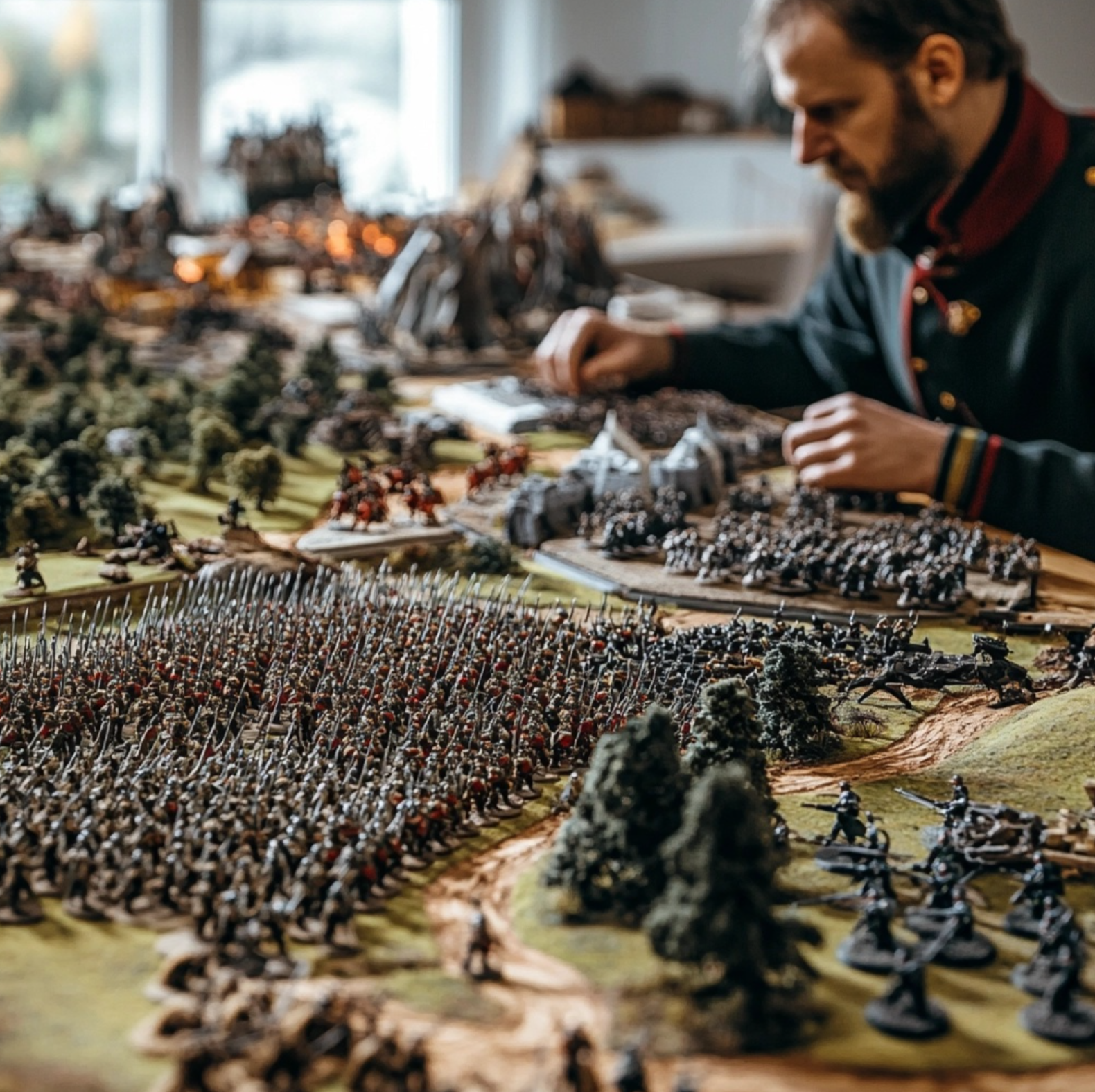Modern Wargaming: From Kriegsspiel to Warhammer
Prussian War Gaming
Modern wargaming traces its roots back to Kriegsspiel, a 19th-century Prussian training tool for military officers. Developed in 1812 by Baron von Reisswitz and later refined by his son, this tabletop simulation used miniatures, maps, and detailed rule sets to model battlefield conditions. The Prussians recognized that practicing strategy in a controlled environment gave their officers a critical advantage, forming a tradition that eventually spread throughout Europe and beyond.
By the early 20th century, various armies adopted wargames for planning and operational drills, often integrating them with cutting-edge technology like radio communication or early radar. Civilians, too, began to experiment with miniature-based military simulations, paving the way for hobby wargames. H.G. Wells’ Little Wars (1913) was an important step in this direction, inviting amateur strategists to recreate historical battles in living rooms across the world.
As the genre branched into commercial board games during the 1950s and 1970s, titles like Tactics II and PanzerBlitz introduced detailed historical re-enactments for hobbyists. Meanwhile, fantasy-focused games such as Dungeons & Dragons (D&D), though more about roleplaying, incorporated battle scenarios that simulated tactical warfare within imaginary realms. Later, Warhammer built a permanent bridge between wargaming and fantasy storytelling, combining the mechanical complexity of table-bound conflict with the drama of elaborate fictional universes and armies.
Today, modern wargames exist in countless forms, from rigorous historical simulations to large-scale miniatures games, digital strategy titles, and roleplaying campaigns that explore war as a central narrative arc. Whether reenacting a legendary siege or forging alliances in a fantasy empire, these games continue the legacy of critical thinking, strategic foresight, and immersive storytelling that began with the earliest military simulations.
REFERENCES von Reisswitz, Georg Heinrich Rudolf Johann. Anleitung zur Darstellung militärischer Manöver. Berlin, 1812. Describes the foundational principles of Kriegsspiel, the Prussian military simulation that influenced modern wargaming. Wells, H. G. Little Wars. Frank Palmer, 1913. One of the earliest published works introducing “toy soldier” battles for the general public. Avalon Hill Tactics II (1958) and PanzerBlitz (1970). Landmark commercial board wargames that brought detailed battlefield simulations to hobbyists.
